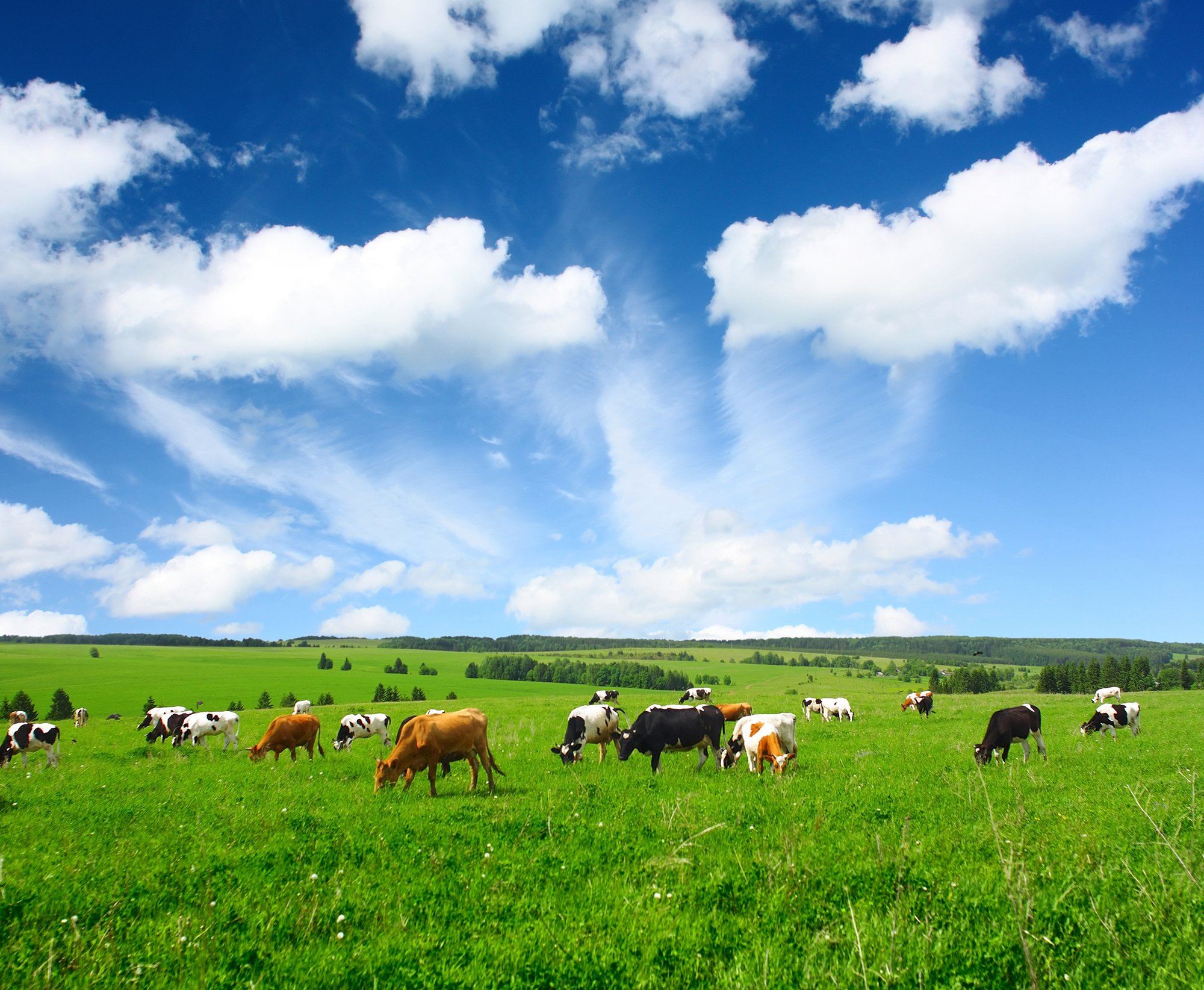It’s no secret that beef collagen holds tons of health benefits for humans. Aside from replenishing your body’s declining collagen reserves (due to age), beef collagen is proven to improve joint health while keeping your skin youthful-looking. For an in-depth read, check out our guide to beef collagen benefits.
Yet, does the source of beef collagen matter? What is the difference between grass-fed and grain-fed collagen, and which should you choose? We’ll take a look at how grass-fed collagen differs from grain-fed collagen and why it’s better for your health and wellness.
Grass-Fed vs. Grain-Fed Beef Collagen — Know the Difference
Grass-fed and grain-fed beef collagen originate from grass-fed and grain-fed cattle. If you’ve always been confused about “grass-fed” versus “grain-fed,” we’ll clear up the air regarding these definitions below. Do note that some cattle may finish either in feedlots or on fresh pastures, so the distinction between the two is not always crystal clear.
Grass-Fed Beef
When reading the labels of grass-fed beef products, you may have come across a similar term called grass-finished. But, is there any difference between 100% grass-fed and grass-finished beef products? You bet there is.
According to the North American Meat Institute (NAMI), 100% grass-fed cattle are “fed only grass (or an equivalent of dried forage) their entire lives.” The U.S. Department of Agriculture (USDA) further specifies that for grass-fed animals, “grass and forage shall be the feed source consumed for the lifetime of the ruminant animal, with the exception of milk consumed prior to weaning.” Strict requirements further emphasized that “animals cannot be fed grain or grain byproducts and must have continuous access to pasture during the growing season.”
On the other hand, grass-finished cattle are only fed grass in the 6-7 months before being slaughtered. Prior to that, they were likely fed a grain-based diet. As such, it’s important not to mistake grass-finished cattle for 100% grass-fed beef.
Grain-Fed Beef
NAMI states that grain-fed (or corn-fed) cattle are given a diet of:
- Corn,
- Soybeans,
- By-products,
- Forage (like leaves and stems), and
- A mix of minerals and vitamins
NAMI explains that grain-fed cattle typically start out on pasture-grazing before being moved to a feedlot. Then, they begin a grain-based diet 4-6 months prior to slaughter. In that sense, many consumers and cattle producers view grain-fed cattle as feedlot-finished or grain-finished beef.
If you are new to feedlot farming, it’s a concept that speeds up beef production to meet high consumer demand. Feedlot farms are often called concentrated animal feeding operations (CAFOs), feed yards, and factory farms. This type of cattle farming is generally considered to be detrimental to the health of the animals due to numerous problems that tend to crop up when housing a large number of animals on very limited acreage.
Compared to natural grass-grazing, feedlots fatten the livestock through a high-grain/low-forage feed. A 2019 NPR article reported that the high-energy corn diet causes grain-fed cattle to gain weight faster than their grass-fed counterparts. Grain-fed meat also has a higher percentage of marbling that appeals to some consumers’ taste buds.
As such, feedlots are a more efficient production method than the grass-based diet in helping animals meet the desired body weight for slaughter. Feedlots are usually reserved for the last stage in cattle production when the bulls and cows are brought in from the pastures.
Connecting the Dots With Grass-Fed and Grain-Fed Beef Collagen
Now that you understand what grass-fed and grain-fed cattle entail, it’s easy to connect the rest of the dots.
Grass-fed collagen refers to collagen extracted from the tissues, cartilage, bones, and hides of grass-fed (and/or grass-finished) cattle. On the other hand, grain-fed collagen is derived from oxen that chows down corn and other common grains.
Are There Any Differences Between Grass-Fed and Grain-Fed Beef Collagen?
You’ve probably heard of the great debate between grass-fed and grain-fed beef, with health-conscious consumers strongly advocating for the former. That’s because nutritional differences exist between the two production methods. Moreover, grain-finished beef is closely associated with animal-centric health problems and welfare issues that can impact you as a consumer.
Keep reading to find out how they affect the type of collagen sourced from these animals.
A Better Nutritional Profile for Grass-Fed Beef Collagen
Scientific research shows a better nutritional profile of grass-fed cattle than grain-fed beef.
A 2010 review published in the Nutrition Journal found that a grass-based diet improved the fatty acid and antioxidant composition of beef. Compared to grain-fed meat, grass-fed produce possesses a higher proportion of heart-healthy omega-3 fatty acids and cholesterol-neutral stearic fatty acids. Plus, grass-fed cattle have greater levels of precursors needed for synthesizing vitamins A and E, as well as the cancer-fighting glutathione.
Furthermore, the Journal of Meat Science reported that corn-finished beef has lower collagen content than alfalfa and grass-finished cattle. Given that bovine collagen is extracted from various organs, choosing 100% grass-fed and grass-finished products will help you reap beef’s full nutritional benefits.
Grain-Fed Beef Is Closely Associated With Health Issues
Sure, grain-fed beef might taste better and is more commonly available than grass-fed beef. Unfortunately, research shows that the former is closely associated with several health issues in animals.
Firstly, the high-grain/low-forage ration characteristic of feedlot feeding often leads to the following bovine health problems:
- Liver abscesses (small, pus-filled masses)
- Acidosis (bovine heartburn)
- Bloating
- Laminitis (tissue inflammation in the hooves)
To combat these problems, farmers often mix antibiotics into the animals’ feed and drinking water. While these medications may help lower the likelihood of the above health issues, it leads to a new problem of antibiotic overuse.
A recent report by the Natural Resources Defense Council (NRDC) highlights the overly generous use of antibiotics among U.S. cattle producers:
- In 2018, 42% of all antibiotics intended for U.S. livestock operations were allocated to cattle (roughly the total amount used for chicken and pork production).
- U.S. cattle producers use antibiotics 3-6 times more intensely than those in the top four European livestock-producing countries.
The routine overuse of antibiotics in the cattle production industry heightens the risk of antibiotic resistance in both animals and humans consuming them. In fact, tetracycline and macrolides — the top two antibiotics used for herd cattle — are some of the most commonly used human medications.
Given that bovine collagen is a prominent beef by-product, grass-fed cattle may be a safer choice when trying to sidestep the above health issues, since healthy cows give healthier products.
Poorer Animal Welfare in Feedlot Farms
While we should purchase grass-fed beef collagen for its superior nutritional profile and fewer health issues, we also need to think about animal welfare.
Feedlot production goes against the natural way of life for cattle in many ways. To speed up meat production (and other by-products, like collagen and beef liver), the animals are often confined to a small, restricted space without any chance of grazing on fresh grass. Shoddy living conditions can lead to more physical and mental ailments, on top of the health issues mentioned earlier.
A recent study featured in the Cambridge University Press examined how a small outdoor feedlot space affects cattle welfare. In this study, bulls were allocated to three space allowances for 12 weeks:
- SA6: An individual pen size of 6 m2.
- SA12: An individual pen size of 12 m2.
- SA24: An individual pen size of 24 m2.
The results showed that the smaller the pen size, the more likely the animals encounter health issues. A larger number of animals in the SA6 group were affected by sneezing, coughing, diarrhea, and nasal discharge compared to those in the SA12 and SA24 groups.
The smallest pen size was also the muddiest, indicating the worst living conditions. Poor environmental conditions also diminished the animals’ appetite as lesser animals in the SA6 and SA12 groups ate during the rainy period (when their living space was muddier than usual).
How To Choose Quality Grass-Fed Beef Collagen

At this point in time, you’re probably leaning toward grass-fed beef collagen. Here are a few tips to help you choose premium-quality grass-fed collagen:
- Grass-fed and grass-finished: Remember, cattle can be grain-fed before finishing on the green pastures. To ensure the beef collagen you purchased is 100% grass-fed, make sure the label reads “grass-fed”, not just “grass-finished.”
- Hydrolyzed peptides vs. gelatin: Beef collagen usually comes in the form of hydrolyzed peptides or gelatin. Hydrolyzed peptides dissolve easily in both cold and hot liquids. Meanwhile, gelatin powder is a natural thickener to add texture to your dishes.
- Third-party verified: While product labels are an essential clue, third-party verifications confirm the collagen supplement is what it proclaims to be. Such certifications are necessary given that the FDA does not regulate the sales of grass-fed collagen supplements.
- Clean ingredient list: While the “100% grass-fed” label usually indicates a lack of antibiotics and genetically modified organisms (GMOs), you’ll want to double-check that there are no fillers, additives, and artificial sweeteners on the ingredient list.
If you are looking for 100% grass-fed and grass-finished collagen supplements that tick all of the above boxes, Zen Principle Beef Collagen Peptides Powder fits the bill. You can check out the FAQs page to learn more about whether our supplement is suitable for your dietary needs.






